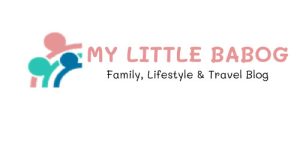Traveling to any destination with your family is fun. It helps you relax and unwind. However, when you think about visiting Camp Lejeune, concerns related to your health and safety might crop up. And it’s only natural, as the region, at one point in time, was known for its contaminated waters. It led to terrible ailments in men and women who are still awaiting compensation.
Close to a million people who worked or resided in Camp Lejeune between the years 1953 and 1987, comprising civilian and military staff, were exposed to the polluted drinking water. It was in 1982 that the Marine Corps realized that since the 1950s, the drinking water that was sourced from two water treatment plants located on the base had been polluted with harsh chemicals, known as VOCs (volatile organic compounds).
According to the Agency for Toxic Substances and Disease Registry, the harmful water in this region has resulted in neurological effects, birth defects, cancer, and neurobehavioral problems in people.
In this article, we will list down certain factors that you can consider to ensure your safety as you visit this region.
Research About the Source of Contamination
Before you head to Camp Lejeune, you need to find out how the contamination started. According to records, a blend of off-base and on-base chemical leaks and spills resulted in water contamination at two water treatment plants, Hadnot Point and Tarawa Terrace.
Also, ABC One-Hour Cleaners, an off-base dry cleaner, implemented faulty waste disposal methods, which resulted in Tarawa Terrace water contamination. It makes the chemicals move into the groundwater and the wells, which send the water to treatment plants.
It was found out that the contaminated water plants had supplied the water to barracks, base hospitals, family housing, recreational areas, administrative offices, schools, and various other areas.
Once you do your research on this, you might want to avoid visiting or staying in these areas. Even though the contamination issue might not persist, many people would refrain from taking a risk. You can try to find out the areas that never had a history of water contamination in Camp Lejeune and think about staying there.
Additionally, if you are staying in any hotel, find out the water supply source and check whether there is any history of contamination. If there is any, it’s always a wise decision to choose another hotel that has no negative feedback on its water supply or other services.
Know Whether the Water Currently is Safe
Many people believe that the Camp Lejeune waters are still toxic and contaminated. One of the primary reasons for that is the constant Camp Lejeune lawsuit updates and news related to it being published online. It speaks about the number of cases that are denied or are still waiting to be processed.
All this can create the impression in people’s minds that the water in this region is perhaps still unsafe. Hence, you must delve deep and find out the truth. Currently, the water in this region has been considered safe for consumption after frequent tests. The test results have assured that the water has been safe to use since March 1987.
However, the state laws and regulations urge the base to scan the water each quarter to check whether there are any VOCs or not. Furthermore, every year, the base reveals the water testing outcomes to the residents. The contaminated wells were closed by the base in 1985.
If you know any residents, you can ask for local updates concerning the water assessments and the current condition. They can provide you with better details and the current status to help you make an informed decision about your travel.
Carry Separate Water Bottles in Public
TorHoerman Law states that during the Camp Lejeune contamination period, there were acute health hazards at increasing rates. A study by the CDC revealed that kids in this region exhibited increased birth defects. They also suffered from childhood ailments like leukemia, neural tube defects, and lymphoma.
There was another CDC study that stated that individuals located at the base were at risk of cervical, kidney, esophagus, and liver cancer. Other ailments included Hodgkin’s lymphoma, multiple myeloma, ALS, and Parkinson’s disease. Even if conditions are better now, it’s always better to exercise precautions so that you don’t develop any diseases.
Hence, when you are on the streets of Camp Lejeune, it’s always a wise decision to carry water bottles and refrain from drinking water from public taps and other similar systems. It’s because they might carry infections from other people, and the surface might have germs that you might not see. Furthermore, refrain from taps in areas that were previously affected by water contamination.
Check Your Health Status
It is necessary to observe how you feel once you visit Camp Lejeune. For instance, having minor allergies or coughs is common. But if you exhibit symptoms like chest congestion, nausea, blood on your stools, and other questionable health issues, it’s best to get yourself checked by an expert doctor.
That way, you will know whether the existing water at Camp Lejeune is the reason for your physical discomfort. Even though drinking water is safe, travelers are in two minds most of the time. So, for any doubt, count on medical counsel.
Additionally, your body might not show any symptoms of an ailment or disorder during your stay in this region. In such cases, you can get a medical checkup done after the visit to ensure that you weren’t affected by using the current water supply.
Finally, Camp Lejeune has come a long way since its contamination period! It is safe to use the water for drinking, bathing, or cooking. But since the polluted water has affected over a million people, it’s always safe to exercise caution when you are traveling here. The points discussed in the article will ensure that you take the necessary measures to ensure that you are safe from consuming contaminated water.
